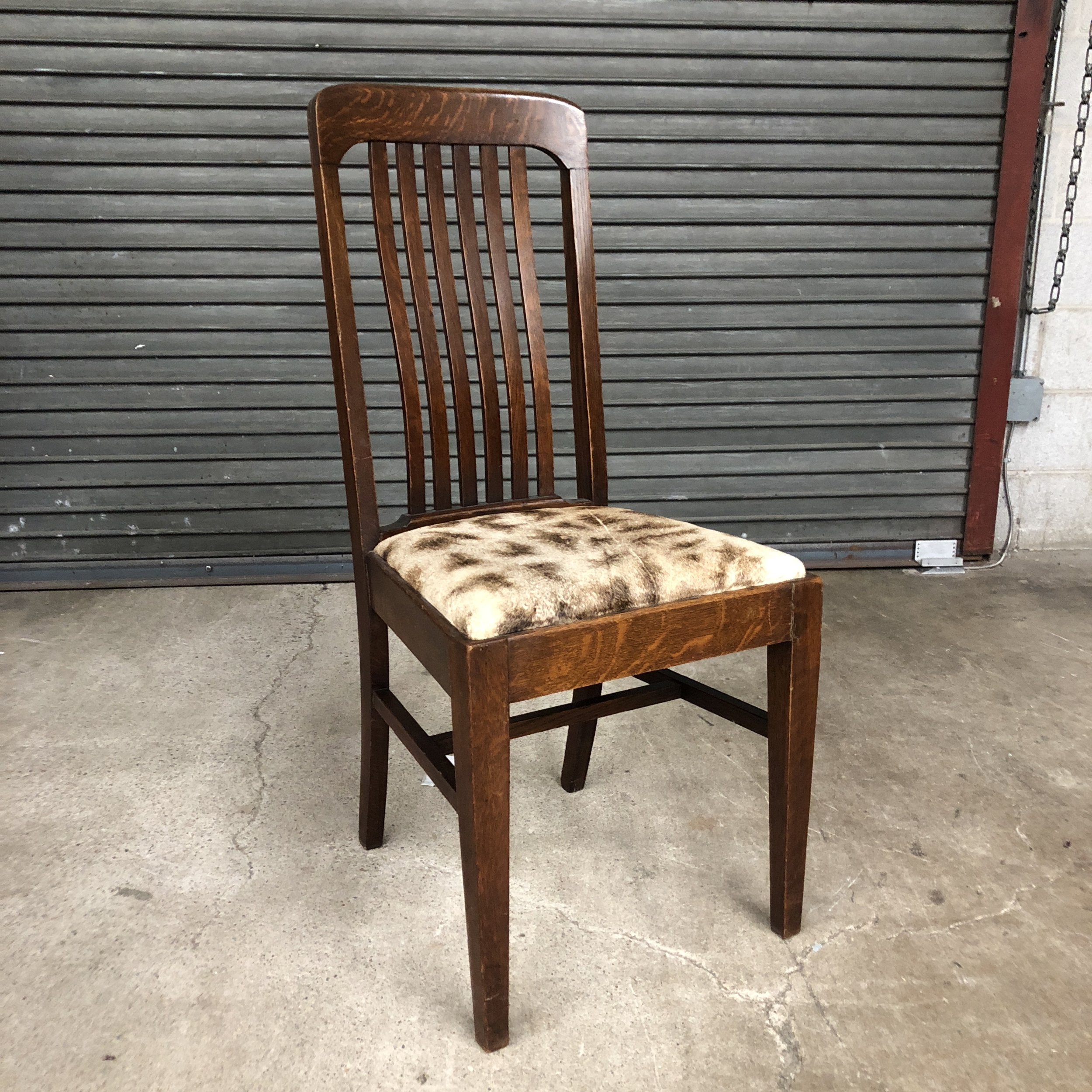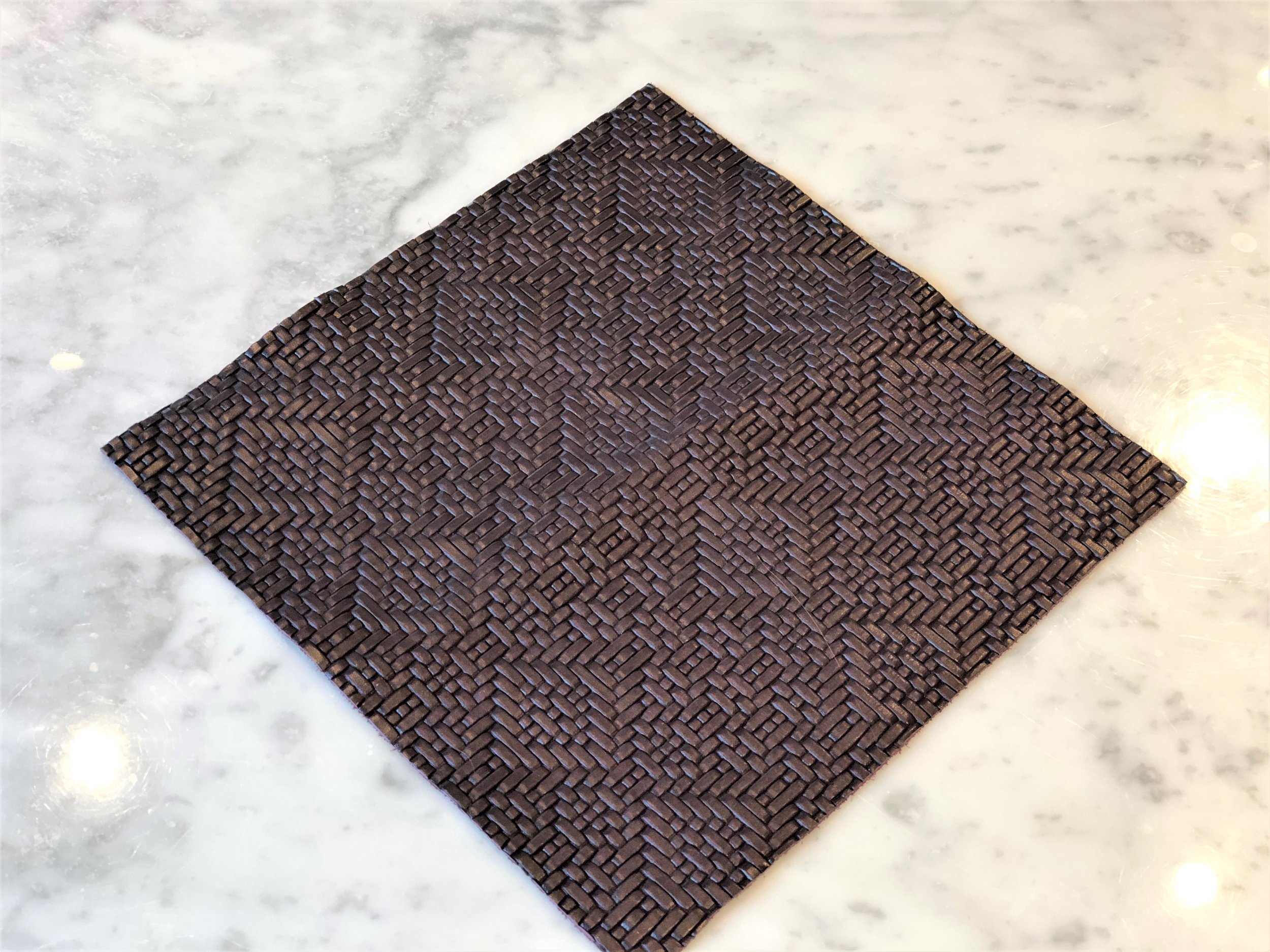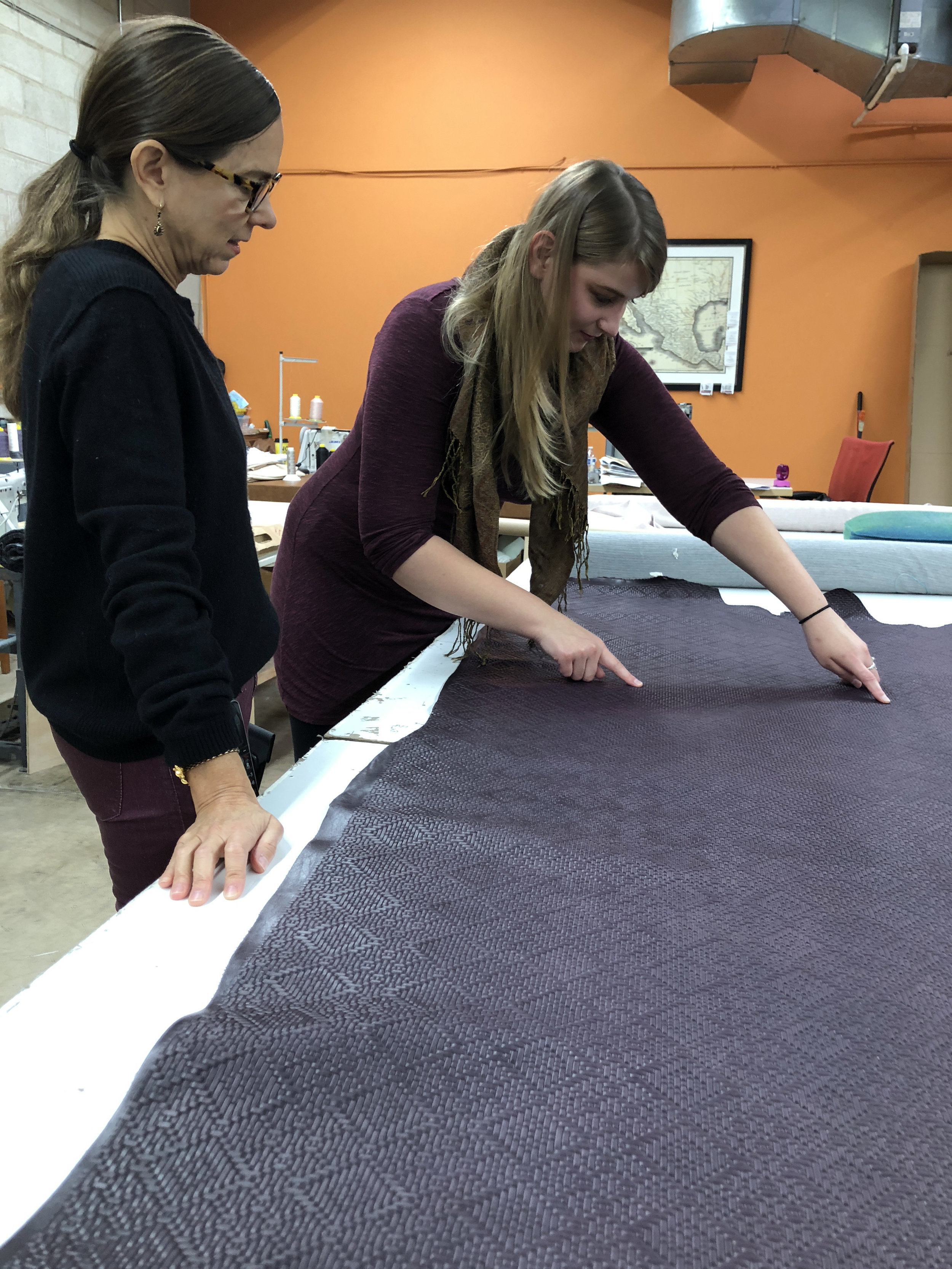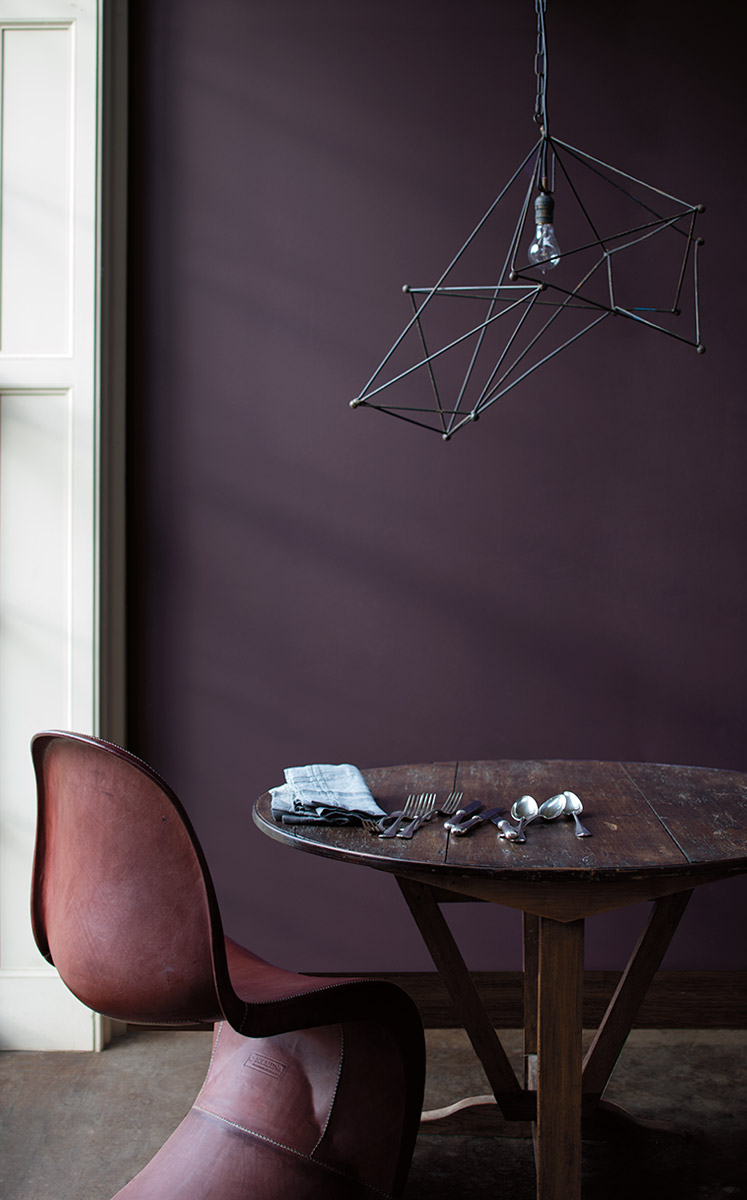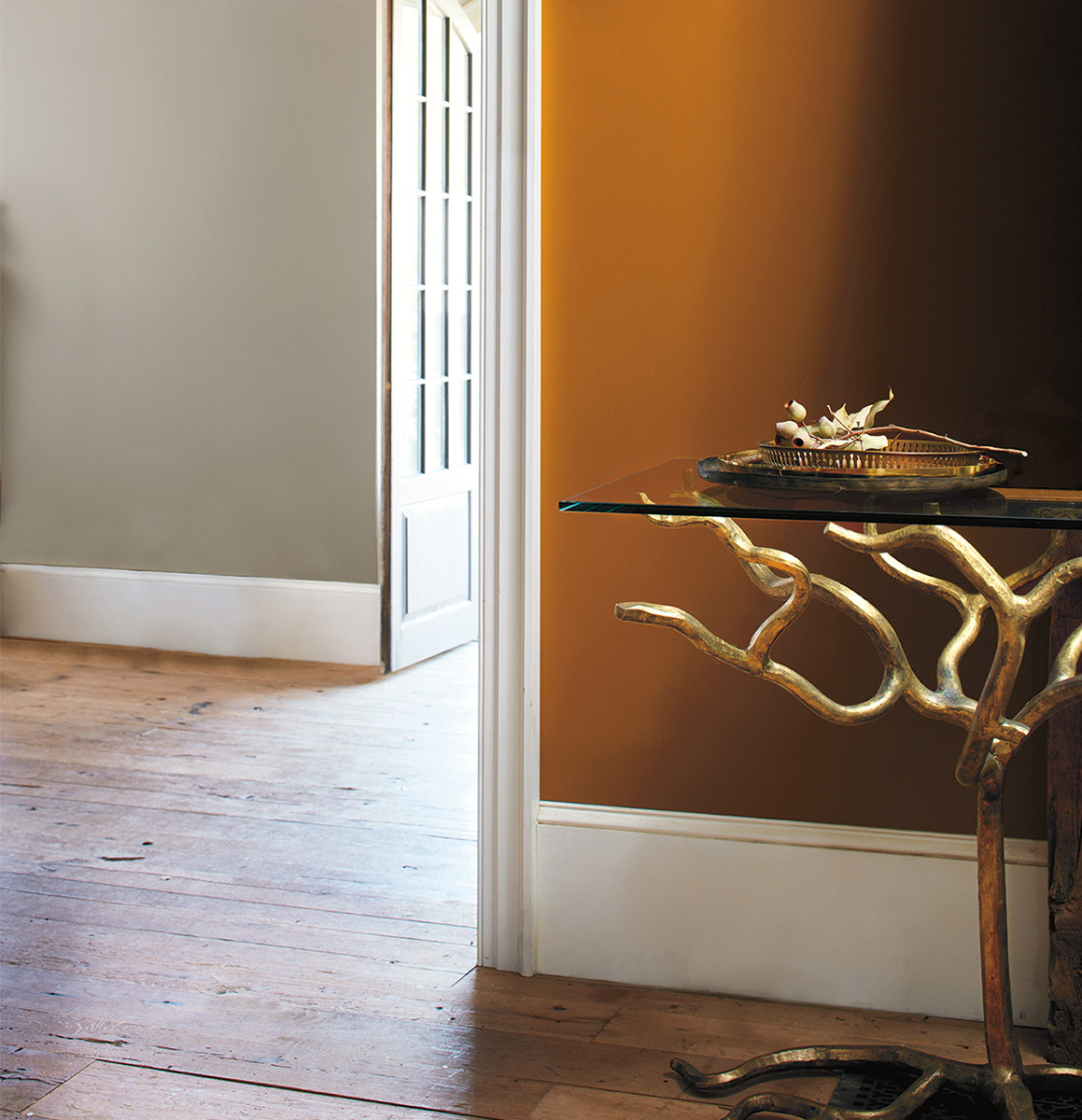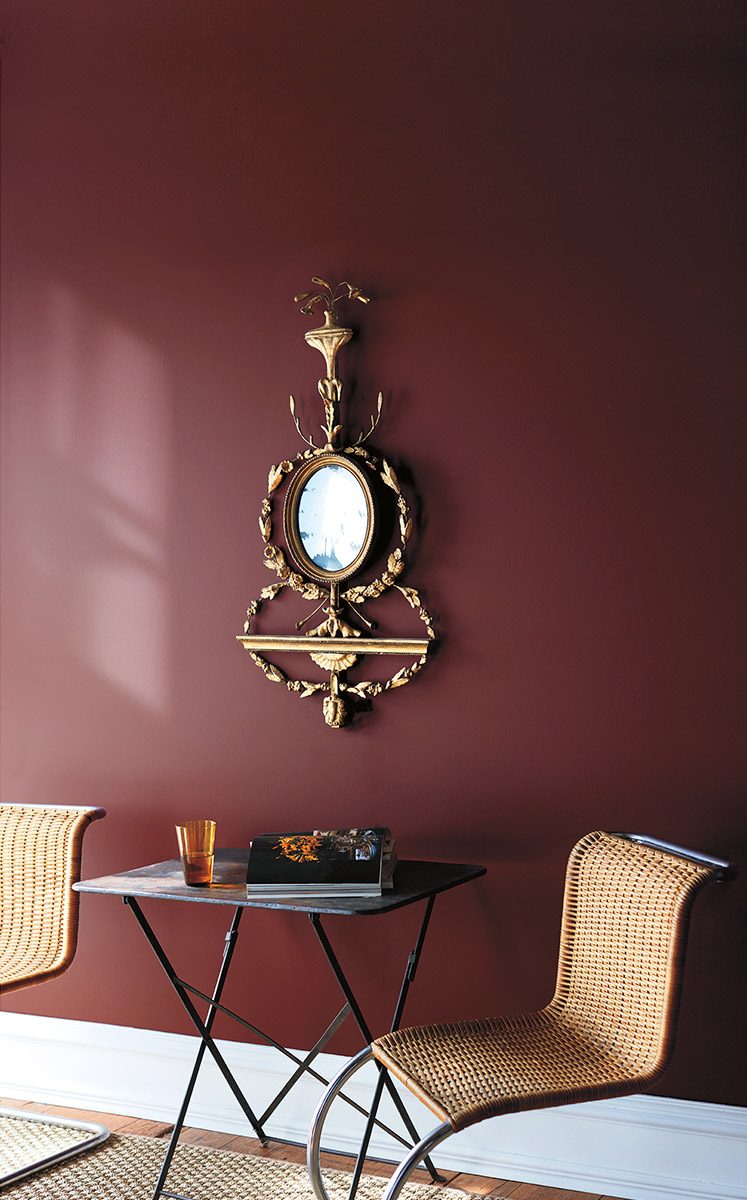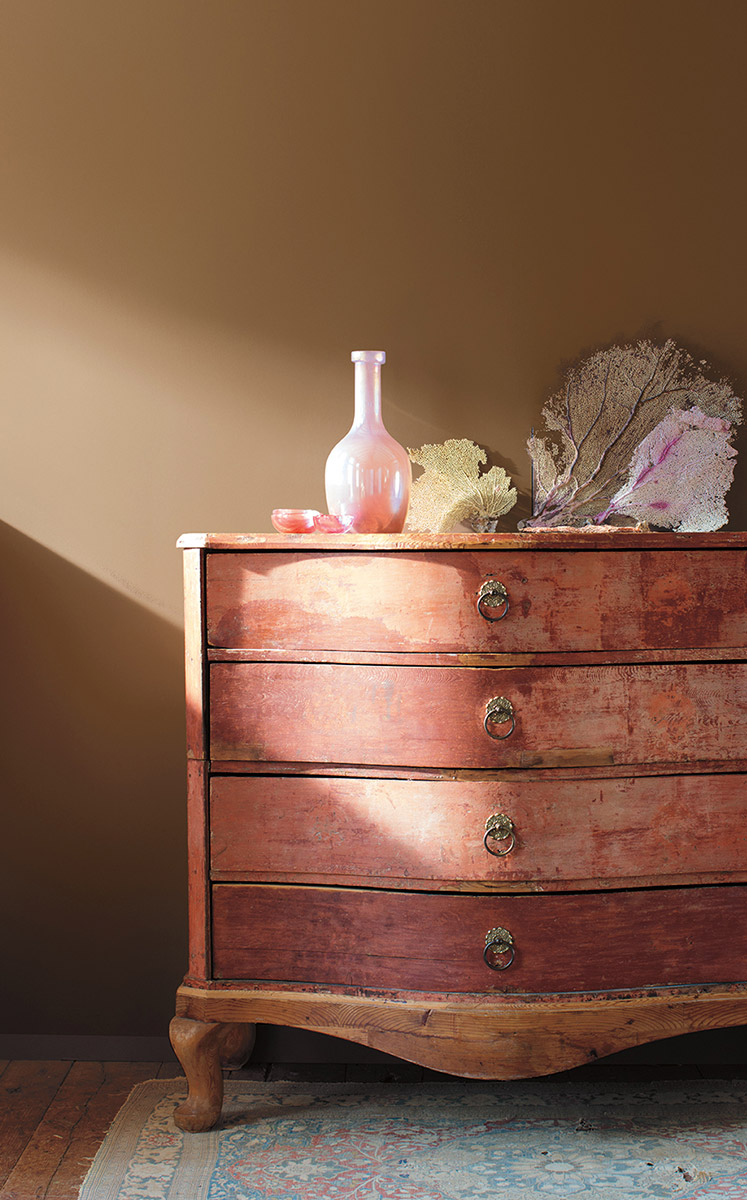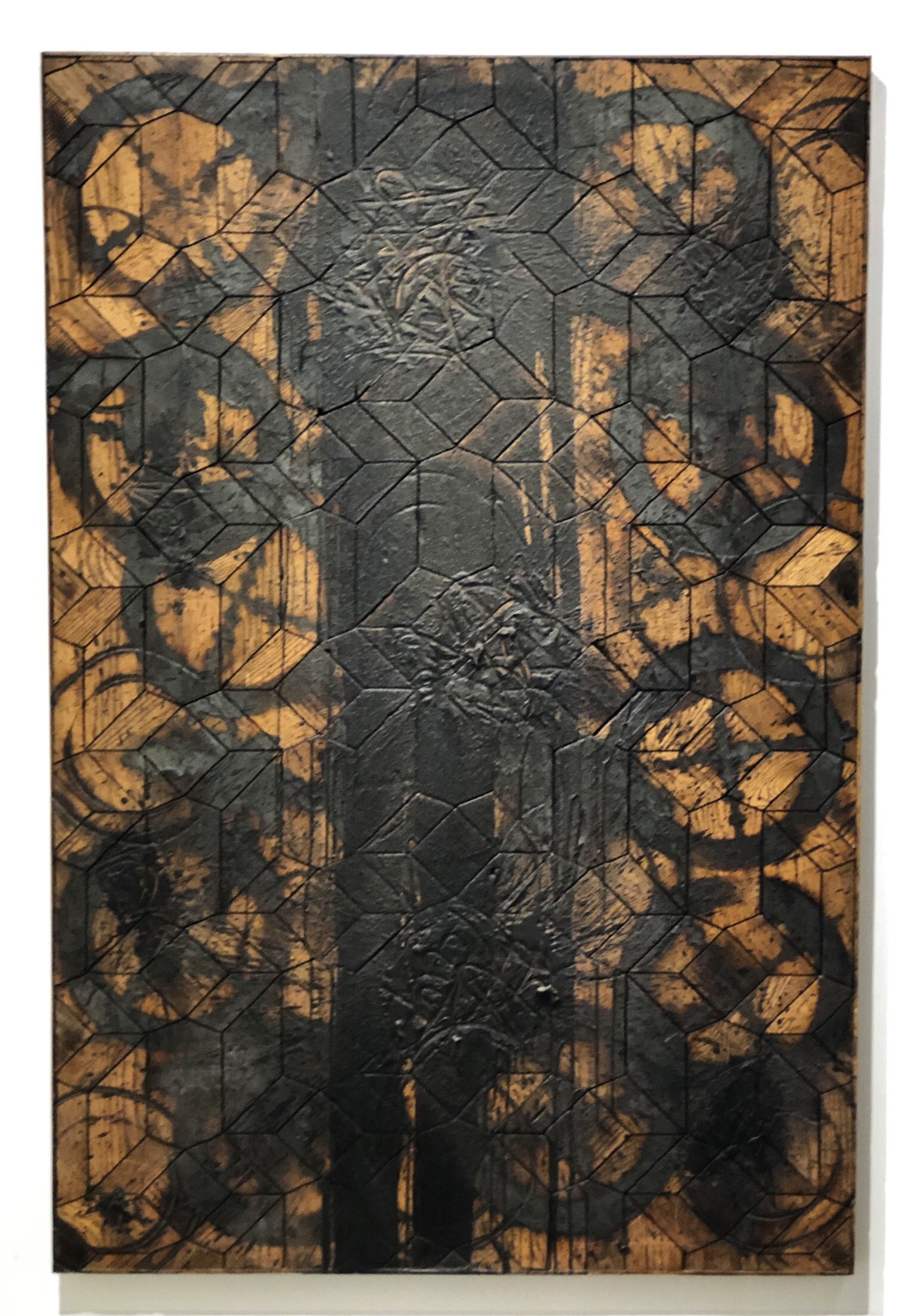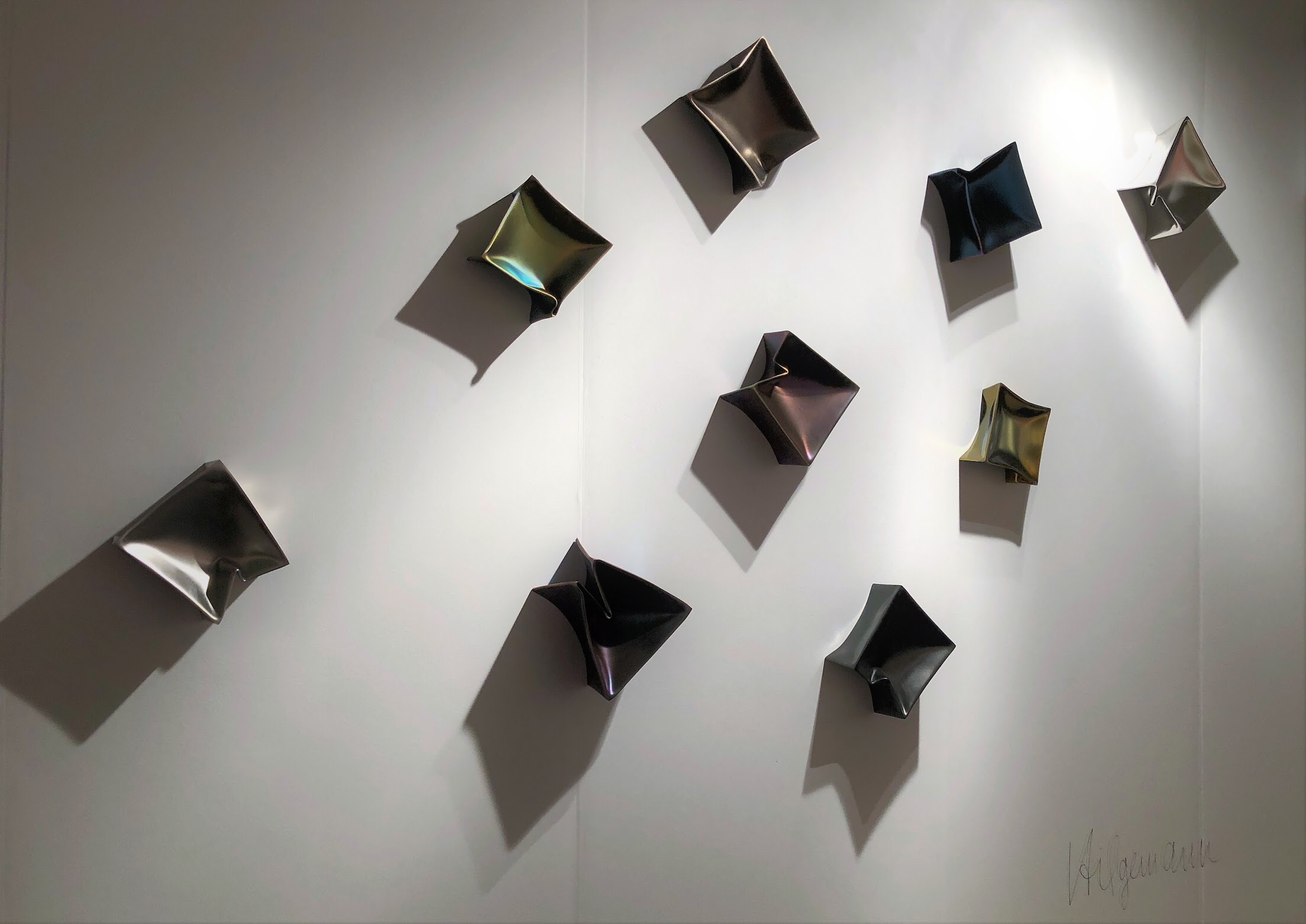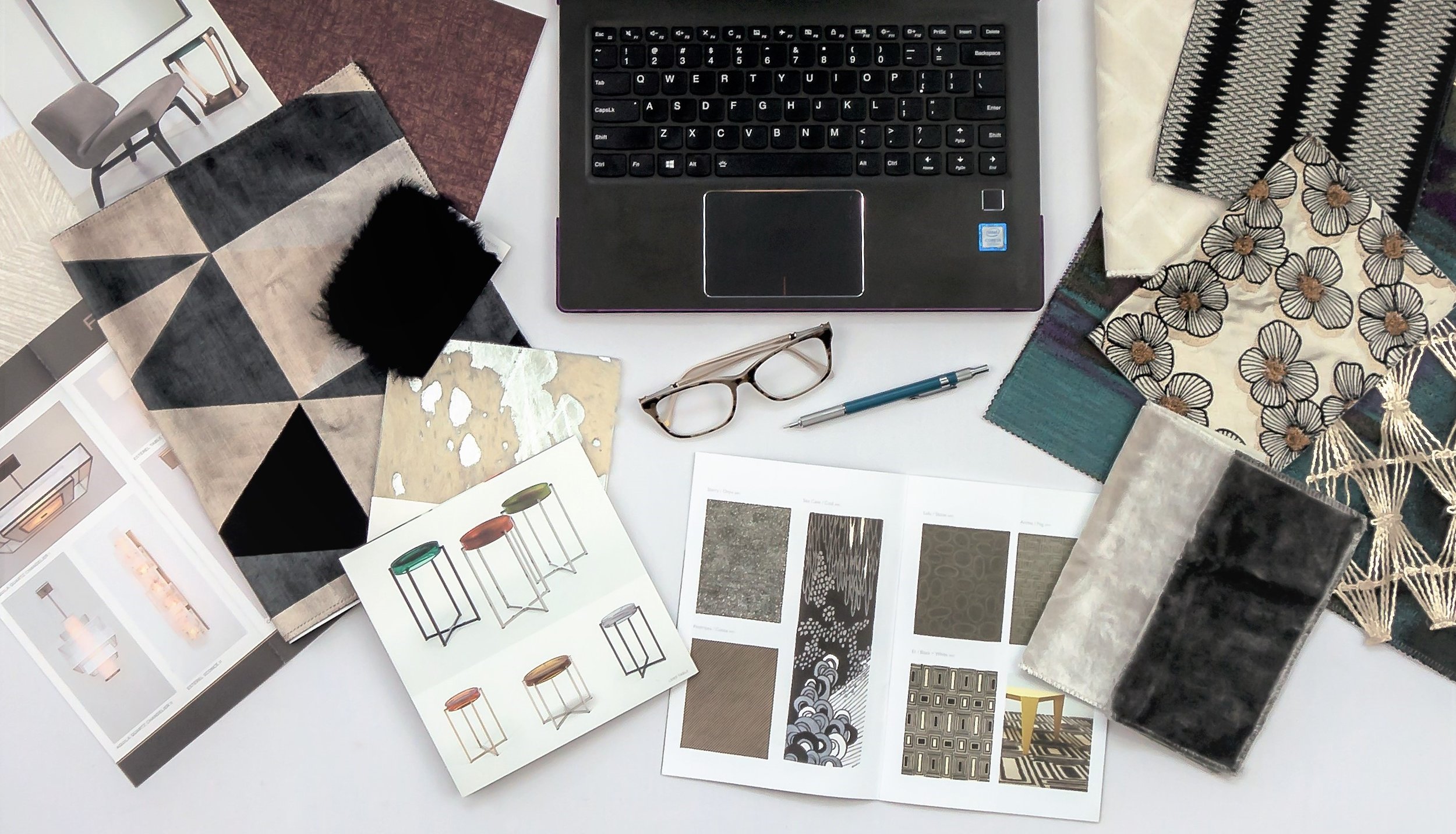
Behind the Scenes: Dining Chair Reupholstery
I’m so excited to share a behind the scenes look at my most recent reupholstery project! These antique chairs needed some TLC. Finished just in time for Thanksgiving, these newly redone chairs are sure to be the talk of the dinner table! Special thanks to my favorite upholstery shop, Covers Unlimited and my go to leather source, Garrett Leather for being invaluable partners in the completion of this project!
I’m so excited to share a behind the scenes look at my most recent reupholstery project! These antique chairs needed some TLC. We cleaned them up, repaired the wood frames, replaced the suspensions and cushions, and reupholstered them in a beautiful new textured leather that you’ve just got to see to believe! We did all this while still maintaining the beautiful antique quality and kept the overall aesthetic of the home in mind. Finished just in time for Thanksgiving, these newly redone chairs are sure to be the talk of the dinner table! Special thanks to my favorite upholstery shop, Covers Unlimited and my go to leather source, Garrett Leather for being invaluable partners in the completion of this project!
The Current Chairs
Truly unique, these chairs were originally upholstered in giraffe hide! The chairs definitely needed some work as the hides were stiff, cracked, and torn making them incredibly uncomfortable to sit on. Covers Unlimited carefully removed the old hides, as my client wanted to preserve the material for an up-cycle project. They took extra caution to care for the wood during the removal process.
Next, the wood frames needed some attention. We did not do a full refinish, but just a basic wood touch up. The existing wood finish was in fairly good condition expect for a few nicks here and there. Some of the chair frames were cracked and needed wood repair. Covers Unlimited took care of the damaged areas while preserving the antique quality. All of the chairs received new suspensions, durable high resilience foam, along with frame tightening. I really appreciated their attention to detail.
One of the best things about working with Covers Unlimited is having a dedicated project manager that works with interior designers. Susan Rix, the Design Project Manager has a background in design and an amazing eye for detail! I love being able to trust that my clients’ furniture is in good hands.
Selecting A New Leather
One of my favorite parts of my job is exposing my clients to beautiful new products they could never even imagine. Part of that process involves educating my clients on quality, value, and what makes one product different from another. Leather in particular is complicated. It can be difficult to understand the qualities and grades of leather. If you’re interested in learning more about semi- aniline, pure aniline, top grain, full grain or other leather terms, check out this fantastic resource from Garrett Leather.
For this project we wanted something that was easily cleanable, aged naturally, and would compliment the antique characteristics. We started with rich espresso tones, made our way to burgundy, but ultimately decided on a deep plum color that complimented the other colors and finishes in the room. To give it an even more one of a kind look and feel, we studied a variety of impress patterns from Garrett. We selected a pattern that complimented the scale of the oriental rugs and went well with the other motifs in the room. We selected Journey Majestic Mountain from Garrett Leather with Impress Bases.
When ordering leather, it’s always a good idea to order a dye lot cutting for approval. Since leather is a natural material, each hide may take the dye slightly differently than the last. A CFA is a small piece cut from the exact hide that you will be ordering. This allows you to review the hide and make sure you are happy with the color and texture before placing the order. After we approved the cutting, we ordered a strike off. The strike off is a impressed sample on the exact hide/dye lot we approved. Our strike off was about 12”x12” which allowed my client to get a good sense of the pattern on our selected leather color.
Rolling Out The Leather
Now comes the moment we’ve been all been waiting for, rolling out the new leather! Over the past 2 month we’ve been looking at small samples and have yet to see the full hide of our new leather. When the hide arrived, I went over to Covers Unlimited to inspect it and talk with Susan about how we would lay out the pattern on the chairs, making sure to be conscious of plate lines and repeats.
The Finished Chairs & Client Testimonial
“Reupholstering my dining chairs totally upgraded my dining room! I never knew changing one element could transform an entire room. When I started the process I knew I wanted leather, but was just thinking “medium brown.” Sarah brought sample books to my house and I discovered a whole new world of color and texture! She educated me on the different qualities of leather, leather dye lots, and how different leathers age over time. She helped to narrow down my options based on our family’s needs and budget. She handled everything from ordering the leather to coordinating transportation for the chairs. She double checked everything and made sure she had our approval every step of the way. She expedited the entire process and even delivered our beautiful custom chairs 2 weeks ahead of schedule! My dining set is antique, mission style, golden oak. Sarah’s eye for detail and sensitivity to, not only the individual item, but to the entire mood and aesthetic of our home has helped us to restore the set to its original beauty. I highly recommend Sarah to anyone who needs help with their home. Thank you!” - Julia
Design School 101: Wool Fibers
As a Interior Designer, I work with fabrics, carpets, and soft goods everyday. Understanding the properties of textiles is key to being able to make the right specification for the client. The inherent natural properties of wool make it a captivating choice the home or office. Here are the basics understanding wool as a fiber in interior design.
As a Interior Designer, I work with fabrics, carpets, and soft goods everyday. When specifying textiles I consider fiber content, durability, color fading, wear resistance, cost, longevity, environmental impact and if it’s appropriate for the specific application. Understanding the properties of textiles is key to being able to make the right specification for the client. The inherent natural properties of wool make it a captivating choice the home or office. Here are the basics understanding wool as a fiber in interior design.
https://www.woolmark.com/collaboration/interiors/striking-a-balance-2/?enforce=true
Synthetic vs Natural
First things first, fibers are generally broken down into two categories: Synthetic and Natural. From there, natural fibers are further broken down into cellulosic, plant based like cotton and linen, and protein based like wool.
Wool Production
Wool comes from the fleece of the sheep. The process by which wool is cut off from the sheep is called shearing. After sheering, the wool is sorted into 4 categories by quality: fleece, broken, bellies and locks. The quality of the wool is determined by a professional and is called wool classing. The most important factor is sorting the wool is the fiber diameter, along with crimp, yield, color and strength. The crimp and elastic qualities of wool make it different from hair and fur. The quality of the crimp corresponds to the fineness of the wool fibers.
Merino Wool
Most commonly known, is Merino wool. Southwestern Spain held a monopoly on the trade up until the 18th century. Modern Merino wool can be found in New Zealand and Austria. Even today, Merino sheep are still regarded as having some of the finest and softest wool of any sheep. What makes their wool so soft is that they have up to 100 crimps per inch. Corser wool may have as few as one or two crimps per inch. Less crimps decreases the ability to bind into yarn.
Global Production
Globally about 2 million tons of wool is produced. 60% of that goes into the apparel industry, only 3% to the textile market. Australia, China and New Zealand continue to be the three top produces of wool.
Color Considerations
Wool is naturally a creamy white color, although some sheep produce natural colors like black, brown and silver. Keep this in mind when designing a custom wool rugs. You will never be able to get a true “bright white” since wool naturally has a creamy undertone.
http://www.sassysewing.co.uk/is-wooly-wooly-warm/
Carpet
When it comes to carpet, we all love the look an feel of a natural wool, but the upfront cost is an investment. Wool is one of the best natural fibers to use in carpets as it is very durable and resilient. It has a superior hand and appearance. Each fiber on it’s own is relatively week, but together the fibers are resilient have and excellent elasticity. Wool is naturally resistant to soiling and cleans very easily. A wool carpet should last 10 years with proper care before showing signs of wear on the major walk ways. Wool carpet will keep it’s appearance longer than synthetic carpets.
https://www.woolmark.com/collaboration/interiors/striking-a-balance-2/?enforce=true
Fabric
Wool is a great fabric to use for window treatments and upholstery because of it’s resiliency. Crimps and creases fall out easily. Wool fabrics are often bulkier than other textiles because of the natural crimp keeping the fibers together, but allowing more air to be held. This causes the fabrics to retain heat.
Fire Factors
Although wool will ignite and burn at high temperatures, it has a low flame spread rating and will self extinguish when removed from heat. It has a low rate of heat release and combustion. It will not melt or drip when ignited. In the event of a fire, wool contributes less to toxic gases and smoke then other fibers used in carpets. This makes it an ideal material to be specified for high safety environments like trains and aircraft’s.
Environmental Factors
Wool is an all natural and renewable fiber. Wool products have a longer life span than other fibers. Wool is naturally antibacterial and antimicrobial. It contains fatty acids and inhibit the growth of mold, mildew and bacteria. This means that wool products do not need to be washed as frequently. Wool is recyclable! It can be shredded into individual fibers and converted into a new product. Once it eventually does reach the end of its life, wool fiber is naturally biodegradable!
https://www.millerwastemills.com/materials/wool-fiber/
Go ahead, touch the walls!
Benjamin Moore just released a line of paint with a soft touch matte finish and it’s absolutely beautiful.
Benjamin Moore just released a new line of paint with a soft touch, matte finish and it’s absolutely beautiful. With the smoothness and texture of a soft leather glove, there's no other paint like it. Last week, I was able to see this unique paint in person at the Merchandise Mart showroom. This finish is truly an amazing texture. Century comes in 75 pre-mixed gorgeous colors that are deeply pigmented to perfection. These rich autumn colors are inspiring me now.
Click here to learn more.
Exploring EXPO Chicago
This year I was fortunate enough to attend EXPO Chicago, thanks to Brizo and Delta Chicago’s Young Designers Night. EXPO is the International Exposition of Contemporary & Modern Art at Navy Pier.
This year I was fortunate enough to attend EXPO Chicago, thanks to Brizo and Delta Chicago’s Young Designers Night. EXPO is the International Exposition of Contemporary & Modern Art at Navy Pier. Every time I attend one of these large shows at Navy Pier, I’m always astounded at how large the facility is and how many artist’s work is on display. There are hundreds of international contemporary art galleries featured and something for everyone’s taste! It was amazing seeing all of the original contemporary art. Nights like this leave me feeling inspired! Here are some highlights from the evening.
Beyond the Color Wheel: Indigo
Indigo, the color of elegance, strength and wonder. It can stimulate clear thinking and captivates the imagination.
Indigo, the color of elegance, strength and wonder. It can stimulate clear thinking and captivates the imagination. Indigo is a dramatic color that creates a bold impact. Don’t be afraid to use a dark color in a small space. Indigo is a great choice for a powder room. It adds a richness and creates a cozy environment that is sure to wow your guests. Indigo also emits feelings of luxury, making it a great choice for a library, bar, entry or formal living room.
Photo Credit: @rededition
Photo Credit: @volcanod
While we see and use color in our everyday lives, rarely do we think about how that color has come to be. Indigo has an interesting history from being harvested as a natural dye, to the synthetic reproduction in the late 1800s and even it’s discovery on the color spectrum.
The history of indigo dates back to 4000 BC in what is now modern day Peru. The color indigo is named after the dye that is derived from the Indigofera Tinctoria plant. Though the complicated process has been modernized by machines, creating natural indigo dye is incredibly cumbersome.
“First the greenery was fermented in an alkaline solution. The liquid was then drawn off and vigorously beaten to aerate it. This caused a blue sediment to form, which was then dried into cakes or blocks to be sent off to market.” (The Secret Lives of Color)
Photo Credit: ayafiberstudio.com
In the 1660’s, Isaac Newton discovered that indigo was one of the seven base colors. He projected a beam of sunlight through a prism to create the rainbow,
“The...primary colours are, Red, Yellow, Green, Blew, and a Violet-purple, together with Orange, Indico, and an indefinite variety of Intermediate gradations.”
Culturally, indigo is found in the burial customs of many cultures. The ancient Egyptians dyed the edge of their burial linens with indigo. In fact, most of the Tutankhamun’s wardrobe was indigo.
Blue Kerchief from Tutankhamun's Embalming Cache
Today, most indigo dye is synthetic. Indigo was first synthesized by Adolph von Bayer, who identified the molecular structure of natural indigo and recreated it in a lab. This allowed indigio to be made on demand. Synthetic dye is more durable and does not lose its pigmentation as quickly over time. Most commercial denim is made using synthetic indigo. Though synthetic indigo is more readily available and cheaper, it does not have the same quality and depth as natural indigo.
Whether synthetic or natural, indigo is not going anyway where. This thousand year old color maintains its appeal in interior design, art, textiles and fashion.
Bonus fact: It was discovered in 2008, that when a banana becomes ripe, they glows indigo under a blacklight. This allows animals who see ultraviolet to know when a banana is ripe and ready to eat.


